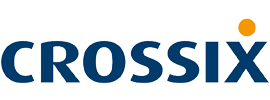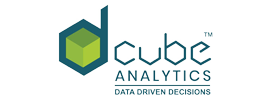2019 Annual Conference

Conference Sponsors









Lifetime Achievement Award
The 2019 PMSA Lifetime Achievement Award was presented to Michel Denarié, for his contributions to PMSA and the pharma analytics community.
Best Podium Presenter Award
Each year, PMSA gives the Best Podium Presenter Award to the highest ranked presentation as selected by conference attendees. Attendees were asked to rank all podium presenters based on several criteria -- insightfullness and applicability of the presentation, ability of the speaker to engage with the audience, and extent to which expectations were met.
The podium presentation that was ranked the highest was: Simple Probability Models for Predicting Aggregate or Sparse Data: An Empirical Analysis of Projecting Patient Persistency, presented by Srihari Jaganathan, UCB Inc. and Ka Lok Lee, IQVIA. The runner-up presentation was Industrializing Machine Learning in Pharma: Challenges, Use Cases, and ROI presented by Kaiwen Zhong, Project Lead, Axtria; Ashish Sharma, Principal, Axtria; and Daniel Kinney, Sr. Director, Data and Analytics Platforms, Janssen Pharmaceuticals.
Best Poster Presentation Awards
The winner of the 2019 PMSA Best Poster Presentation Award was An All-Encompassing Machine-Learning Attribution Model to Plan, Predict and Measure Impact at the Channel and HCP Level, presented by Mark Ortlepp, Principal – Advanced Analytics, Brand & Marketing CoE, IQVIA and Justin Hawver, Engagement Manager – Advanced Analytics, Brand & Marketing CoE, IQVIA.
|
SUNDAY, APRIL 14, 2019 |
|
|---|---|
|
01:00 PM - 05:00 PM |
TRACK 1: Applications for Data Science in the Pharmaceutical Industry The tutorial will begin with an overview of data science, machine learning, and AI. What is "data science" and what are its promised benefits? Is it living up to its promise in the pharma world? The presenters will follow with a high-level overview of data science applications in pharma, including text mining, pattern recognition in medical testing, screening of medical testing, targeting, patient journey, segmentation/classifiction, influence detection, and dynamic message refinement (next best action). The taxonomy of AI/ML approaches and the role of data management will also be considered. What are the pros and cons of the different approaches? How does appropriate data management contribute to successful applications of AI/ML? Software options will also be discussed. The second half of the tutorial will feature detailed case studies, including a Random Forest application, a "Next Best Action" example, an RF model application for overall resource optimization, and a case study predicting patient adherence/non-adherence for intervention. Speakers: David Wood, Ph.D., Senior Principal, Axtria; Sravan Kumar Bhamidipati, Director, Axtria TRACK 2: Referral/Patient Sharing Data The “DocGraph” dataset shows how Medicare Providers share patients in time. This large, graph dataset can reveal the structure of the healthcare system, showing how patients flow through Medicare. Learn about the dataset that is frequently studied as one of the largest social graph datasets, using real-names, that is available to the public. This class will also cover MrPUP, which is the explicit referral dataset, as opposed to the implicit referral dataset. Key topics will include:
Speaker: Fred Trotter, Founder, Careset |
|
06:30 PM - 09:00 PM |
Welcome Reception |
|
MONDAY, APRIL 15, 2019 |
|
|---|---|
|
07:30 AM - 08:30 AM |
Breakfast |
|
08:30 AM - 08:45 AM |
Welcome Speaker: Jin Tong, PMSA President |
|
08:45 AM - 09:45 AM |
Keynote Presentation: Underscore the Golden Opportunity – The Time is Now for Enterprise Wide Data Two thousand eighteen marked a watershed moment in the value of real world data to the entire life science enterprise. The last 5 years have witnessed a radical acceleration in the availability of data and a transformation in the way marketers need to establish and demonstrate value in more specific patient cohorts over the brand’s lifecycle. Last year, the FDA capped this transformation with it’s guidance related to the use of real world data as real world evidence to make regulatory decisions on therapeutics and devices. Now more than ever organizations should be thinking about optimizing the use of data across the enterprise, across medical and commercial teams to explore, validate and demonstrate value to all players in the ecosystem. Depending on where your organization is in its maturity, commercial analytics teams can help get to the next level of industrialized insight. Speakers: Elenee Argentinis, Vice President, Data Strategy and Partnerships, Life Sciences, Optum |
|
09:45 AM - 10:15 AM |
Break and Vendor Fair |
|
10:15 AM - 11:00 AM |
A brand’s commercial performance is impacted by various direct and indirect influences coming from key healthcare stakes holders – Providers, payers and patients as well as from other components of healthcare landscape such as market unmet need, product differentiation, cost of treatment and availability of generics. While these influences are very well understood in their own silos, there is limited understanding of how they interact with each other and how these interdependencies impact patient’s acquisition and retention dynamics. This presentation will demonstrate a truly integrated analytic solution powered by AI models for brand commercial performance diagnosis, opportunity identification and what-if scenario analysis to maximize patient’s acquisition and retention. The solution framework is based on joint artificial neural network comprising of recurrent neural networks and deep neural networks that allows the analysis of entire patient medical history and treatment pathways in a single model to make better prediction. Also, the big data platform on which this solution was built and the API accessibility enables automation, high-performance computing and service flexibility for this analytic solution to deliver insights at scale. A case study will be shared to illustrate business impact of this solution. In addition, diagnostic accuracy will be compared to classical analytics methods demonstrating consistent outperformance of this solution. Speakers: Emily Zhao, VP Advanced Analytics, IQVIA; Pankaj Gupta, Senior Principal, Commercial Services, IQVIA |
|
11:00 AM - 11:45 AM |
General Session 2: Local Healthcare Market Analytics: Approach and Case Studies The trend in the healthcare industry towards value-based care motivates payers and provider organizations to become more holistically involved in the patient journey, from diagnosis to discharge. Payers and providers are consolidating through M&As and competing for patients to gain greater control over healthcare delivery in individual Local Healthcare Markets (LHMs). However, the pace, size and success of these consolidations vary considerably among LHMs, resulting in increased heterogeneity in the U.S. healthcare landscape. Tackling this heterogeneous business environment requires pharmaceutical manufacturers to develop flexible local go-to-market strategies to address to the needs of various stakeholders within an LHM. Most manufacturers are beginning to react to market variability in small ways (e.g. carve-out territories), but the right answer is a complete commercial overhaul in specific LHMs. To enable variable local go-to-market strategies, the first step for manufacturers is to expand their LHM analytics and insights generation capabilities to better understand local market heterogeneity. They need to identify the right geographical unit of analysis and then understand the influence of payers and provider organizations within those geographies. The influence of payers and provider organizations within an LHM are elucidated by their structural prominence and sophistication, their focus on controlling healthcare delivery and their expression of that control. In addition to expanding their LHM analytics and insight generation capabilities, manufacturers need to employ B-to-B key account management strategy to engage complex, integrated customers in specific LHMs. This must be coupled with a close collaboration between Development, Medical and Commercial units to streamline customer experience. Our presentation will begin in section 1 by outlining the need for flexible local go-to-market strategies and highlighting the challenges associated with defining and characterizing local markets. We will also discuss where current techniques fall short in addressing these challenges. In section 2, we will present our novel two step approach to accurately define and characterize local markets using advanced analysis of multiple data sources:
In section 3 of the presentation we will discuss two case studies that illustrate the above approach and its applications to pharmaceutical manufacturers. In one example, we will describe how Genentech leveraged this approach in a heavily payer-controlled therapy area to create a business process to prioritize regional payers for contracting. In another example, we will show how Genentech used this approach in a different therapy area to optimize its local go-to-market field deployment model (type and mix of field roles) for a recently launched product. We will conclude (section 4) of the presentation by highlighting gaps in the current approach, proposing ideas to fill those gaps (e.g. leveraging machine learning techniques to identify local factors that influence and drive patient leakage), and outlining additional areas where this approach is most applicable (e.g. marketing, market access, medical). Speakers: Nilay Shastri, Sr Field Operations and Analytics Manager, Genentech; Abhishek Panditrao, Associate Principal, ZS Associates; Himanshu Patni, Manager, ZS Associates |
|
11:45 AM - 12:45 PM |
Lunch and Vendor Fair, Poster Sessions |
|
12:45 PM - 01:30 PM |
Biologics is the fastest growing sector and driving innovation in the industry. There are several biologics launching every year with unique attributes (Mode of administration or safety profile), It always a crucial task for other biologics companies to measure initial impact of these products in the market and develop a quick strategy to maintain and increase their Market share. Most of the KPIs are at the national level where we may not see a real impact in the initial months, so it’s important to develop leading KPIs to get an early look and impact in the market, especially for sales and marketing teams. With the real world data, we can identify an important segment of the market and profile these patients and doctors who may be an early adopter and potential future advocate of the launch drug. Looking at the switching patterns, days on therapy, add-on drugs, the patient journey can provide crucial actionable insights, with the enhanced payer patient level access level can be used for true payer level impact. Even though the population of new patients or bio naïve may be small as compare overall market but it still provides a very early view of future impact. Speakers: Harpreet Singh, IBD Data Science Manager, Takeda Pharmaceuticals; Jiaran Wang, Takeda Pharmaceuticals |
|
01:30 PM - 02:15 PM |
General Session 4: Predicting Therapy Discontinuation Using Bayesian Reasoning Look at the persistence curve of any chronic therapy and you'll invariably see a significant drop in the earlier stage of the therapy. We all know there is a slew of events that influence discontinuation. For starters, admission to ER, a visit to another doctor for a second opinion, a change in dosing, a side effect, or an increase co-pay. We know they have an impact but are not quite sure about the magnitude of the impact. We also sense that the impact of these events may not be the same if the patient is in the early stage or latter stage of the therapy. Also, we cannot ascertain if the difference is limited to magnitude or also involves directionality. If we could somehow quantify the impact of an event on patient discontinuation while differentiating, say, between early stage (ramp-up) and latter stage (cruising), we would be able to establish which events are material and which ones are not. We would then be able to focus on the important ones and identify relevant interventions both at the physician and patient levels that would significantly reduce the odds that the patient would discontinue therapy. We could gain additional insights by analyzing the impact on competitive drugs. This presentation describes an approach we have developed and implemented to predict the odds that a patient will discontinue therapy when an event presents itself. Speakers: Jean Patrick Tsang, PhD & MBA (INSEAD), President, Bayser; John McIntosh, Associate Director Marketing Analytics, Actelion (Johnson & Johnson) |
|
02:15 PM - 02:45 PM |
Break and Vendor Fair |
|
02:45 PM - 03:30 PM |
General Session 5: Targeting and Segmentation in Specialty Pharmaceuticals with Calibrated Messaging With capped resources for sales teams, modern sales force sizing and alignment decisions must artfully blend subjective knowledge captured from field experts with objective measurement gleaned from improved access to big data. Among the most critical exercises in planning is building a list of physician- and account-targets, leading to the prioritization challenge. How can sales management optimize both the physician’s and the field representatives time? In this session, we will delve into a concrete example in the field of neurology to reveal a method and segmentation framework to help you organize physicians to optimize lead allotments. Results and impacts expected include a demonstration of Targeting refinement to build messaging, KOL identification by local territory, and an example of how KOLs can power tactical Market Access in active negotiation with local payors. Speakers: Mert Sahin, PhD, Chief Marketing Officer, US/CAN Imaging, GE Healthcare; Ashish Patel, Product Lead and Founder, CareSet Systems |
|
03:30 PM - 04:15 PM |
Individual drivers working in concert & synergistically can accelerate unit sales and overcome a plateau in a competitive market and sustain brand growth. Biopharma companies must plan to create opportunities for growth and resurgence in growth to minimize sales declines in the US Oncology market. In this paper, we identify such drivers in order to provide guidance for growth and/or resurgence of oncology brands. Our objectives are to incorporate both qualitative & quantitative analysis to better understand oncology product and market drivers. To accomplish this we develop a predictive model to determine the key drivers of oncology demand (1) growth, (2) plateau and (3) decline, based on data from recently launched oncology therapeutics. Speaker: Bernie Manente, Associate Partner, FosterRosenblatt; Jerry Rosenblatt, Managing Partner, FosterRosenblatt |
|
04:15 PM - 04:30 PM |
Housekeeping and Announcements |
|
04:30 PM - 05:30 PM |
Poster Judging and Reception |
|
05:30 PM - 06:00 PM |
Annual Membership Meeting |
|
06:45 PM - 10:00 PM |
Dinner Cruise on the Admiral Hornblower. Meet in the Lobby at 6:45 PM to walk to the dock to board the dinner cruise for a 7:30 PM departure. It is a 5-minute walk to the dock. The boat will return at 10:00 PM. |
|
TUESDAY, APRIL 16, 2019 |
|
|---|---|
|
07:30 AM - 08:30 AM |
Breakfast |
|
08:30 AM - 08:45 AM |
Welcome and Lifetime Achievement Award Presentation |
|
08:45 AM - 09:45 AM |
Keynote Presentation: Evolving Analytic Decision Making in a Digital Environment What is familiar to a business analyst in pharmaceuticals is leveraging data-driven insights to shape brand and company strategies. This is no different than a basketball general manager leveraging analytics to produce a winning team. However, what is more and more common is that digital is providing the channel through which pharmaceutical analytics can directly impact patients to improve their lives. In this discussion, Aaron will touch on several trends in pharmaceutical digital analytics and share case examples of digital initiatives that may directly affect patient well being. Speakers: Aaron Foster, VP, Business Analytics and Insights, Pfizer |
|
09:45 AM - 10:00 AM |
Break and Vendor Fair |
|
10:00 AM - 10:45 AM |
Once a drug has been launched in the market, adverse drug reactions (ADRs) are one of the major challenges faced by the healthcare industry. We provide an automated machine learning based framework enabling spontaneous ADR detection using advanced deep learning and natural language processing techniques leveraging social media data. We have sourced a manually annotated tweet corpus made publicly available by the researcher community. Each tweet is manually labelled by two expert annotators for the presence of the ADR or its absence. Furthermore, for each tweet identified as ADR positive, words and phrases containing an ADR event are also annotated. We treat ADR detection as a binary classification task using state-of-the-art deep learning architecture, Recurrent Neural Network (RNN) followed by annotation of specific words containing an ADR event. In conclusion, the proposed framework not only provides an automated feedback mechanism for ADR detection, but also enables tagging of specific text containing an ADR event, providing relevant and concise market intelligence to concerned authorities. Conventionally, clinic trial groups go through posts and news manually to identify adverse events. The suggested adverse event reporting system could significantly reduce the time and manual effort involved in the detection process. Speakers: Ketan Walia, Senior Associate, Axtria; Rushil Goyal, Associate, Axtria Companies currently face big challenges when trying to make key strategic decisions for products in their pipeline and portfolio; these decisions directly affect hundreds of millions of dollars of investment, but in many cases are based more on “feel” or rough estimates rather than real world data and statistical analysis. The long-time “gold standard” for informing these decisions has been well intended primary market research, which comes along with challenges in terms of being self-reported (which people are notoriously bad at), limited to pre-supposed questions, and dependent on a large enough sample to be representative of the population. With recent advances in data availability and analytics, there is a significant opportunity to help enhance organizational decision making through data science. One foundational aspect of strategic marketing decision-making is developing a robust segmentation, for which subsequent marketing decisions are made. Recent advances in data availability and analytics have provided a wealth of observable real-world data that can be used to better understand customer behaviors and derive attitudes to develop real world segments without the need for primary market research. Using advanced data science approaches, including artificial intelligence and machine learning, we have been able to observe real world behavior to ascribe and predict segment membership with ~90% accuracy and no need for a typical “typing tool.” Speakers: James Bierman, Associate Principal, ZS Associates; Vikas Hegde, Data Science Manager, ZS Associates; PKS Prakash, Data Science Manager, ZS Associates |
|
10:45 AM - 11:30 AM |
Pharma targeting is all about reaching out to the most valuable customers – physicians or accounts— that are most likely to prescribe your brand to accelerate launch adoption and maximize depth of prescribing. Brand teams have a strategy in place to optimally allocate its limited sales and marketing budget to target its most valuable customers. Traditionally, the target list is based on historical market sales volume for launch brand and incorporates brand sales volume for in-market brand, and the list is typically revised quarterly, semi-annually or annually. Rep calls as well as other promotional tactics are executed based on this target list of physicians or accounts. However, traditional volumetric targeting approaches might not be sufficient when the underlying drivers of physician or account prescription are rapidly evolving in a dynamic market place where there is overcrowding of brands, expanding indications within the same therapeutic area, along with group practice affiliations, patient and managed care dynamics. This presentation will discuss ways to address this challenge and stay ahead of the game. Speakers: Sreya Chatterjee, Associate Principal, Analytical Wizards; James Lin, Advisor, Analytical Wizards A Manufacturer’s Medicare Part D Coverage Gap Rebate liability can be a significant charge against gross revenue, therefore, the ability to estimate this liability with a certain degree of accuracy is required for financial budgeting purposes. Unfortunately, unlike other product variable costs, a product’s Coverage Gap liability is multifactorial and dependent on external dynamics such as the number of treated patients, patient specific Part D plan benefit design, and patient concomitant therapy costs. In addition, annual changes to coverage gap thresholds such as Total Drug Spend and Total Patient Out-of-Pocket costs further complicate estimates. For most Medicare patients, drug spend includes multiple branded and generic products, all of which will contribute to Coverage Gap thresholds. Since each patient will have different comorbidities and associated medications, accurate prediction of aggregated coverage gap liability associated with a single product will require an understanding of the distribution of patient total costs. Simulation-based modeling allows the inherent variation and distribution of patient costs and benefit designs to be incorporated, thereby improving aggregate coverage gap liability estimates. Speakers: Patrick Thompson, Director – PECG, BristolMyersSquibb; Chad Waraksa, Associate Director- VAP Analytics, BristolMyersSquibb |
|
11:30 AM - 01:00 PM |
Lunch and Vendor Fair, Poster Session Women in Analytics Luncheon: The Power of Advice |
|
01:00 PM - 01:45 PM |
Companies have turned to analytics to help them drive more effective campaigns, and to rules-based programs to help reps decide when to execute different tactics. The challenge with most measurement programs is that they suffer from aggregation bias, washing out granularity as they estimate the overall response to a given tactic. They also can be challenged to provide critical insights around differences across deciles, specialties and geographies. When we look at rules-based execution aids, they are inflexible and do not tie to changing responses over time. This presentation focuses on finding the optimal solution to evaluate and optimize the performance of new digital tools and a new addressable ecosystem designed to provide continued support to sales reps within a multi-channel customer experience. Traditional measurement would not be able to get the level of insights that marketers need. We took a page out of our Digital Media Measurement practice to apply supervised machine learning techniques to the challenge to rapidly and consistently deliver granular insights to enable improved sales force execution and optimal multi-channel customer experience. Speakers: Jane Portman, VP, Health Analytics, Merkle; Brian Demitros, VP, Analytics, Merkle Digital Innovation is the next wave of change for the Pharmaceutical Industry. This presentation will focus on innovations in multi-channel tactics and measurement. Historically the industry had focused on “one size fits all “approach, how we can personalize the customer experiences to yield deeper engagements? The session will also explore multi-channel experiments which can help learn about physician channel preferences and needs. Additionally, looking into future-where does Social fit in the digital landscape? In today’s marketing landscape having digital insights and data is a key strategic move for organization. The goal is to help organizations think of how we innovate with digital for future? What have achieved in the past few years in digital and how can we best learn about our customers digital needs? Since each business question is unique and requires different tactics to answer the business goals. It is important to know when to use which tactic. We will demonstrate how to use analytical methodologies with the do’s and don’t. Speakers: Anvita Karara, Associate Director-Digital and Customer Experience, Boehringer Ingelheim; Sumanth Srinivas, Director, Data Strategy and Innovation, Boehringer Ingelheim |
|
01:45 PM - 02:30 PM |
Assessing Potential of Physicians is the key for success to various Sales and Marketing strategies. Traditionally, untapped potential of a Physician could be defined by leveraging competitors data (Market basket) or by analyzing Diagnosed but un-treated patient data. However, for drugs with prophylactic use, no ICD10 Codes and no competitors, traditional approach to identify potential of physicians fails. Thus, there is a need to define a systematic approach that could help identify physician potential for such drugs. Recently, 159 Solutions partnered with Gilead Sciences to design a machine learning model that helps predict patients who are more likely to be at-risk. These potential patients when rolled up at their most visited physician, helped define a physician’s value from a commercial stand point. Our PU machine learning (Positive Unlabeled) model was trained by using the profiles and medical history of current patients before they started therapy on Gilead's drug vs. set of unlabeled status patients. The model was then used to score the entire patient pool that helps predict patients who are more likely to be at-risk. Speakers: Tanmay Sharma, Associate Manager, Sales Analytics, Gilead Sciences; Mukesh Masand, Principal, 159 Solutions; Sagar Gulati, Consultant, 159 Solutions Ever since the inception of Digital Era, numerous efforts and thoughts go behind the planning, designing & executing the various endeavors – Be it creating a website or launching a Marketing campaign or hosting a banner. To realize the impact of these efforts, we measure “ROI” – Return on Investment. Though, ROI measurement `relates to usually realizing the dollar impact on the end Conversion KPIs such as a Sale, Lead, Registrations, Bookings etc. basis the various genres of industries the impact is measured for – similar is the case for the Healthcare industry. There have been various challenges & drivers in the past such as selection of right metrics, highly convoluted customer journey across multiple touch points, lack of adequate technology etc. Which are directly and indirectly leading to evolution of the future & present of ROI measurement to experience & engagement led measurement approach. Speakers: Tarun Minocha, Director, Digital Analytics & Enablement, United Health Group; Abhinav Gupta, Senior Manager, Digital Analytics & Personalization, United Health Group |
|
02:30 PM - 03:15 PM |
Traditionally, machine learning classification algorithms have been used to find patients with a high propensity for a diagnosis or treatment by analyzing events in the patient history. Utilizing longitudinal patient data, such learning algorithms have proven successful in finding patients with rare genetic disease or cancer prior to diagnosis. Patients with such medical conditions traverse through a complex patient journey within the healthcare system. They may pass through multiple healthcare providers with symptoms, series of lab & imaging tests, and several misdiagnosis along the journey. Models trained using the patient history of definitively diagnosed patients help identify similar patients prior to diagnosis. Classification algorithms have also been used to identify patients with a higher likelihood of initiating a specific treatment. However, such algorithms do not always perform well to predict disease progression or line of therapy progression. Patients with conditions such as breast cancer, multiple sclerosis or blood cancers in remission may show signs of progression characterized by complex and diverse symptoms, diagnoses, lab and imaging tests prior to a relapse event and may be ready to initiate the next therapy. Some patients with certain genetic mutations may be more likely to progress faster. Predicting patients likely to progress presents a unique challenge to such classification algorithms. To address this above-mentioned challenge, we investigate whether more traditional Bayesian statistical methods, specifically Markov Chain-Monte Carlo models utilizing inherent longitudinal temporal insights from medical, hospital and prescription claims history can be used to more effectively compute probabilities which predict the future progression of multiple sclerosis and other complex diseases. Utilizing longitudinal temporal insights from medical, hospital and prescription claims history, a Markov state model was developed to depict the steps a patient takes through the healthcare system. Probability scores are calculated for each transition in the patient journey. For a patient with a series of prior healthcare events, these algorithms can predict the “optimal” next event. Speakers: Rajkumar Rajabathar (RB), Engagement Manager, Symphony Health Solutions; Karin Hayes, Principal, Symphony Health; Viswa Balasubramanian, Vice President, Symphony Health Optimizing the number of in-person sales visits, or “details,” sales reps make to health care providers is a perpetual high-value problem for pharmaceutical companies, made especially challenging for two reasons. First, the historical allocation of details is nonrandom and based on expected value of customers, making it nearly impossible for regression models to tease out the effect of detailing. Second, existing causal inference methods designed to control for these confounding factors require corresponding tradeoffs with flexibility and power, as these methods are primarily designed to model binary decisions only – for example, whether to conduct a certain marketing intervention. We introduce a new approach for optimizing sales call allocation for maximum effectiveness based on causal uplift modeling. This methodology was used to improve the sales force call planning for a major franchise of a top global pharmaceutical company. The uplift modeling approach identified sizeable, statistically significant differences across customer segments in terms of the marginal value of delivering additional details. This helped pinpoint opportunities to get greater return with less effort. As a result, the brand team could better understand how to adjust detailing efforts to maximize prescribing in a limited time. Speakers: Cristina DeFilippis, Senior Consultant, Deloitte Consulting; Kevin Coltin, Senior Consultant, Deloitte Consulting |
|
03:15 PM - 03:30 PM |
Break and Vendor Fair |
|
03:30 PM - 04:15 PM |
General Session 7: Analytics Applications Across Functions & Career Path for Analytics Professionals Panel Discussion Moderator: Tatiana Sorokina, Associate Director, Digital & Advanced Analytics in Oncology, Novartis Panelists: Julia Brodsky, Executive Director, Data Strategy and Services, US Oncology, Novartis; Aaron Foster, VP, Business Analytics and Insights, Pfizer; Becky Malia, Sr. Director, Medical Advanced Analytics, GSK; Devesh Verma, Principal, Axtria |
|
04:15 PM - 05:00 PM |
Group Discussion/Workshop |
|
WEDNESDAY, APRIL 17, 2019 |
|
|---|---|
|
07:30 AM - 08:30 AM |
Breakfast |
|
08:00 AM - 08:15 AM |
Final Day Announcements |
|
08:15 AM - 09:00 AM |
General Session 8: Industrializing Machine Learning in Pharma: Challenges, Use Cases, and ROI While the most pharma companies work with AI/ML in different parts of the organization, few actually leverage AI/ML beyond proof of concept projects. AI/ML pioneers in the pharma industry face challenges industrializing AI/ML to create large scale impact. In our survey, lack of stakeholder buy-in and lack of data to solve real time problems are the two most prominent hurdles in the organizational-level adoption. These two factors are survey participants’ top concerns for applying cutting edge analytical solutions, as indicated by 84% . These challenges lead to three consistent questions asked across the organization:
In our research and presentation, we will address the above questions, by looking both within and outside the pharma industry. The answers to these questions will shed light on the current landscape and future value creation of AI/ML in pharma management, analytics, and ultimately, patient outcomes. Speakers: Kaiwen Zhong, Project Lead, Axtria; Ashish Sharma, Principal, Axtria; Daniel Kinney, Sr. Director, Data and Analytics Platforms, Janssen Pharmaceuticals |
|
09:00 AM - 09:45 AM |
Long term data on patient persistency is critical for constructing patient flow models in pharmaceutical forecasting. Persistency rates are typically available only for short duration such as 12 months or 24 months due to availability of data. Moreover, the data sometimes are available only at the aggregate level (Example: persistency rates by month and product). A much longer duration of persistency rates is required in the analysis of patient flow models. Typically projecting patient persistency is achieved by using simple curve fitting techniques in spreadsheets on aggregate persistency data. This would sometime provide sub-optimal and irrational projections. Lee, Fader, and Hardie (LFH) (Foresight, Issue 8 Fall 2007) proposed a very effective and simple probability based approaches such as shifted Beta Geometric, Beta discrete Weibull models to project patient persistency rates. The main objective of this article is to empirically analyze LFH models on persistency data from diverse disease states such as diabetes, epilepsy, osteoporosis, immunology, hypercholesterolemia and hypertension. We demonstrate that simple probability models are effective in forecasting persistency rates. We discuss the implications and advantages of using simple probability models over the current widely used practice of curve fitting to project persistency rates. Speakers: Srihari Jaganathan, UCB Inc.; Ka Lok Lee, IQVIA |
|
09:45 AM - 10:00 AM |
Break |
|
10:00 AM - 10:45 AM |
In this talk, we will discuss examples of Machine Learning applications for Primary, Secondary, and APLD data to produce results that were previously available only through Primary Market Research Analytics. We will also discuss how to combine Machine Learning Insights from Secondary & APLD data with Primary Research Analytics to create combined 360-degree insights for the Oncology business for strategic and tactical decision making. We will also discuss how Machine Learning is used for Secondary & APLD HCP segmentation and how Primary Research Driven Behavioral and Attitudinal Segmentations could be combined with the secondary data driven machine learning approach. Speaker: Igor Rudychev, AstraZeneca |
|
10:45 AM - 11:45 AM |
Conference Wrap-Up and Prize Giveaways |
|
POSTERS |
|
|---|---|
|
In today’s omni-channel world, analytics has come a long way in measuring and predicting impact at the channel level to understand where marketing dollars should optimally be spent. Questions about who to target, which channels, and how much to spend per channel will always be with us. To answer these questions and more, IQVIA has pushed the limits of machine learning to develop a multi-step ensemble model. After data pre-processing, Bayesian Machine Learning is used to update the decay parameters for each channel. Since we use a sampling algorithm to estimate the posterior distribution, this can be very time consuming. The attribution side of the model is established in the final step when estimating the impact of each channel at the HCP level. This is done by using the updated decay parameters with Bayesian Machine Learning. The HCP level model is a Bayesian regression model, built with constraints and prior knowledge of channel impact values applied from the channel level model. A separate model for each HCP is created, making the process time-intensive, but extremely valuable. Compared to standard approaches, the attribution model has significantly more Rx impact prediction power for multichannel marketing campaigns. Using the HCP-level outputs of the model, micro-segmentation allows for customers to be grouped into viable segments to receive specific channels and/or creatives with customized messages that will resonate with the perspective audience. Non-linear channel response curves using the attribution model result in the ability for marginal attribution to be measured, allowing for investments to be optimally distributed to maximize ROI. IQVIA’s model can also be refreshed when a campaign is live to support campaign optimization decisions. This advanced modeling solution captures Rx impact behavior changes within a few months to show what channels, tactics and metrics need to be adjusted to improve campaign outcomes. Results from past and current campaigns are incorporated and are leveraged by marketers. These revised models and insights keep HCP preference and channel mix selections relevant and readily available for the next round of campaign planning, establishing a culture of continuous learning and optimization. Mark D. Ortlepp, Ph.D., Principal – Advanced Analytics, Brand & Marketing CoE, IQVIA; Justin Hawver, M.S., Engagement Manager – Advanced Analytics, Brand & Marketing CoE, IQVIA |
|
|
Digital marketing via display, video, and mobile advertising have become increasingly important components of direct-to-consumer tactics. Traditional click & keyword measurement techniques can help optimize advertisers’ bid strategies for purchasing digital media, but it is not at all clear how well a consumer’s engagement with an ad is correlated with the underlying likelihood that a qualified patient will seek out a particular test or treatment. This problem is exacerbated in the case of rare conditions with complex patient pathways: it is difficult or impossible to derive any real success metrics, let alone ROI, from a campaign where patients need to go down a long, windy funnel from exposure to treatment. This presentation will include a case study that shows some of the challenges and successes of measuring an unbranded campaign for a rare disease from end to end. This study shows that granular measurement of new patient starts is applicable to and can be feasible for campaigns well outside the large brand, common condition mainstream. Sean Bell McDermott, Analytics Supervisor, Crossix |
|
|
Delighting Customers with Automated Content Personalization As more channels became available to pharma companies to interact with health care professionals (HCPs), the amount of content has increased proportionately. However, the abundance of information only generates more ‘noise’ for HCPs as they make every effort to remain up-to-date. Pharma companies are looking at innovative approaches to streamline content that are most relevant and useful for HCPs by understanding customer journeys. Advanced capabilities in machine learning (ML) are increasingly being deployed at the enterprise level to generate actionable recommendations at an industrial scale.
Michael Steward, Vice President – Analytics, Indegene |
|
|
Determining Incidence for the First Time in a Growing Market with Limited Epidemiological Data Peanut allergy (PA) is associated with high rates of severe reactions and impaired quality of life, yet epidemiologic data are limited. There has been no work done previously to understand the true rate of incidence in this therapeutic area. We combined a real-world, nationally representative cohort of patients’ medical and prescription claims, with findings from medical literature to determine incidence. We believe that this methodology will be of value to practitioners of commercial analytics in the pharmaceutical/biotech space with direct application to other emerging disease states with poorly understood incidence rates. Direct applications are market opportunity assessments for new product introductions, and accurate estimates of the volume of patients entering at the top of the forecast funnel to predict treatment rates and product revenues. Varsha Damle, Director, Global Commercial Operations, Aimmune Therapeutics, Inc. |
|
|
Dynamically Improving NLP & Theme Discovery Through Contextual Linguistics for Pharma The paper deals with the science and the process of establishing a contextual linguistics program for pharma and healthcare companies to develop stronger insights into unstructured data - currently done through manual interventions or stock NLP engines. We have historically seen that NLP and text mining techniques have not yielded reliable results across industries, largely due to the lack of category based nuances within the LID (language identification layer). However, a credible solution to this challenge rests in developing and tuning a taxonomy that caters to the context of a particular therapy or category, making it possible for reliability and machine led insights to improve dynamically. Through this poster, we aim to present a glimpse of how we have been able to solve this challenge for a medical affairs function within a large Pharma and also potentially scale the solution to solve for the definitive unstructured data pool – social media. Jingfen Zhu, PhD – Chief Science Officer & VP, Analytics, Genpact; Kanishka Chatterjee – AVP, Commercial Analytics, Genpact |
|
|
How Can a Combination of Trial Subject-Level Data and Real World Data Improve Trial Design? EMR and large claims data sets, available in many countries, can be used to refine entry criteria at the protocol synopsis stage. Although not originally designed for this purpose, aggregated data from prior trials can produce event rates for different populations and be extremely useful in refining the end points for trials. We will describe the various data types of interest, and present a blinded case study showing how this combined methodology was used for the design of a cardiovascular outcomes trial, where event rates of hospitalizations were accurately determined using both EMR and historical trial level data. Moreover, conducting patient surveys can give a unique perspective into the drivers of participation and thus help drive patient-centered recruitment strategies. Finally, leveraging all three input types can help the sponsor optimize the recruitment and conduct of their clinical trial. Michel Denarie, Sr Principal, IQVIA |
|
|
How Payment Delays Can Affect Brand Marketing at Launch Medicare Administrative Contractors (MACs) are responsible for adjudicating and remitting payment for medical benefit services billed under Part B. Part B includes treatments in oncology, immunology, and vaccines often referred to as “buy and bill”. In 2017, we investigated pricing and payment variations across MACs and uncovered a key question that may affect physician revenue cycle management: what are the delays in payment processing time between MACs per product? Some treatments can cost tens of thousands per patient. As such, the ability to warn them of a potential 60 or 90-day reimbursement delay is critical in sustaining the trust of early adopters. Key insights include almost all of the MACs take longer to reimburse new products, taking an average 25 to 45 days to reimburse across all TAs. This may influence the prescribers decision to prefer inline products over newly launched products. Although MACs don't place any policy barriers, the market share of a product could vary significantly across different regions. Regional strategies should be developed for the geographies that are underperforming. Regionally, MACs in Midwestern states (WPS) and FL (FSCO) are slowest in reimbursing and take up to 2 additional weeks to reimburse. New product launches have more variation at the MAC level and the variation is greatest in the Midwest (NGS) & West (Nordian). Launch teams should take into consideration regional differences for launch planning, strategy, and sales messaging. Ashish Patel, Product Lead, CareSet Systems; Nilay Shastri, Field Operations Manager, Genentech |
|
|
Is Data Fabric the Future for Data Lakes? As the industry moves into a maturity phase of building and managing data lakes across enterprise for various business functions there are growing list of challenges which needs to be addressed like cross business data consumption, standardization of data lakes, enterprise wide Datalake enabled use cases. Data lake platforms on cloud or Hadoop have enabled cost effective solutions to gain competitive advantages and sharpened insight driven focus. Due to multiple reasons like data security, cross function data ownerships, organizational compulsions, data challenges like structured/unstructured/volume/ingestion speed most organization have ended up creating multiple Datalake’s or repositories. Data Fabric enables an enterprise wide Datalake enabling key capabilities which are currently missing in individual Datalake. As part of this presentation we will try to answer these questions:
If these are your pain points, then rapid adoption of data fabric is the answer.
Ashish Sharma, Principal, Axtria; Rajesh Choudhary, Associate Director, Axtria |
|
|
A Machine Learning Approach to Customer Acquisition We describe a robust machine learning (ML) approach for predicting new prescribers of a specialty product in the cardiology/pulmonary space. We experimented with various ML algorithms (Naïve Bayes, Logistic Regression, and Random Forrests), and employed a classical training, holdout and test sampling for model development, and evaluation, and assembling methods to score non-writers in term of likelihood to write in the next 6 months. We used an Algorithm Expected Value approach to balance the expected trade-offs between the financial costs of false positives and false negative for prospect target identification. Brian Gibbs, PhD, Principal, Axtria Inc. |
|
|
Mass media is alive and well, accounting for the largest share of direct to consumer (DTC) advertising spend. Recent innovations in analytics and the breadth and depth of data now available have made it possible to optimize mass media advertising efforts with greater accuracy and precision than ever before. This presentation will share lessons learned in helping pharma teams to measure and optimize the performance of their mass media DTC advertising efforts, with of focus on national TV, which is where the largest investments are made. This presentation will share case studies demonstrating optimization insights uncovered for some actual mass media campaigns by harmonizing measurement and using connected data at the consumer level. These case studies leverage extensive connected patient level data sources to measure how marketing efforts work together across channels to drive patient outcomes and to enable data driven, forward looking optimization and scenario planning. Adam Dubrow, Director, Advanced Analytics, Crossix |
|
|
Proactive Brand Performance Analytics Companies spend over $1.5 billion on R&D of a single drug and spend on launches in the US can be up to $250 million- it is imperative to establish Proactive Brand Performance Analytics that can help brand success by rapidly diagnosing root cause of business issues, identifying hidden opportunities, and enabling implementable actions. Often, it takes too long, with a lot of time spent in data collection and analysis. There is a critical need for an effective, agile, comprehensive and decision driven approach that identifies drivers of performance / opportunity areas, enables prospective (what-if) analysis, and facilitates collaborative decision making across functions. In this presentation, we will showcase the journey of two companies in redefining their launch and growth monitoring capabilities to make agile, cross-functional decisions and the business impact they achieved. GSK started its journey with performance drivers analytics for in-line products to drive timely interventions. Encouraged by the impact generated, GSK applied the concepts for a launch brand. Shire started with the vision of building the best in class launch analytics to enable agile cross-functional decisions at launch. Encouraged by the impact generated for one brand, Shire has scaled the proactive launch approach as the “standard” capability for all follow-on launches as well as inline brands. Dave Mahagnoul, SF Insights & Analytics, GSK; Bob Middien, Commercial Insights and Operations, Shire Pharmaceuticals; Mani Sethi, ZS Associates; Karthik Sourirajan, ZS Associates |
|
|
Utilizing Oncology Local Market Modeling Analytics to Discover Unrealized Opportunity As healthcare providers and payers continue to broaden their influence on HCPs in oncology, it becomes necessary to integrate intelligence about these players into the HCP behavior framework. We combine knowledge of payer and provider anatomy – including organization of subsidiaries, channels of influence, and industry trends to create the Provider Master and Payer Spine, thus tying data observations to decision makers. Using this foundation we have built several models to understand brand utilization: single variate regressions illustrating correlation and spillover, multivariate regressions to explaining how payers and providers interact to push demand in a local market, and 3x3 influence charts tracking payer vs provider impact. We observed the impact of high-control health systems has spillover impact on the total health care delivery within the local markets in which they operate. This is critical to understand, as the drivers and levers of these systems, and the engagement model with these stakeholders (ie, partnerships, promotions, and contracts among stakeholders) have an effect not only within that health system but also on the overall local market. Shiraz Hasan, Vice President, Precision Xtract and Ashwin Athri, Senior Vice President, Precision Xtract |
|
